
It has been almost thirty years since there has been a roleplaying game set in the universe of the films
Alien and
Aliens, but that roleplaying game—the
Aliens Adventure Game from Leading Edge Games in 1991—is primarily remembered for its complexity and emphasis upon combat over horror. That said, the publisher did produce
Aliens, a highly effective treatment of the film which was also one of the earliest co-operative board games. However,
Free League Publishing, best known as the publisher of
Mutant: Year Zero – Roleplaying at the End of Days and
Tales from the Loop – Roleplaying in the ’80s That Never Was, obtained the licence and published
Alien: The Roleplaying Game in 2019. Drawing from the films
Alien,
Aliens,
Alien 3, and
Prometheus, this explores the future of mankind in the late twenty-second century, where out on the frontiers of space, colonists scratch a living on barely terraformed worlds, starships towing mammoth refineries processing resources leave for the inner worlds with their crew in hibernation, corporations own and run worlds, rivalries between corporations escalate in cold wars and hot wars, and the United States Colonial Marine Corps attempts to keep the peace. Out on the frontier, in the coldness of space there are secrets too, some corporate, others unimaginably ancient, many of which will get you killed or kill you. There are rumours of old ruins, of impossible aliens, of lost colonies, and coverups—and maybe they are more than rumours, perhaps they will get a person killed too. This is the set-up for Alien: The Roleplaying Game, its future one of body horror, survival horror, corporate malfeasance, dark secrets, and worse…
Alien: The Roleplaying Game has three themes and is designed to be played in two different modes, suggests three different campaign models, and uses the Year Zero engine. The three themes are Space Horror and Sci-Fi Action, combined with a Sense of Wonder, whilst the two modes are Cinematic and Campaign. Cinematic mode is designed to emulate the drama of a film set within the Alien universe, and so emphasises high stakes, faster, more brutal play, and will be deadlier, whilst the Campaign mode is for longer, more traditional play, still brutal, if not deadly, but more survivable. Of the two, the Cinematic mode is suited to one-shots, to convention play, and as introductions to the mechanics and setting of
Alien: The Roleplaying Game. To date, the only scenarios available for
Alien: The Roleplaying Game—
Chariot of the Gods (also found in the
Alien Starter Set) and
Destroyer of Worlds, are written for the Cinematic mode. The three campaign models are Colonial Marines, essentially military missions like Aliens; Frontier Colonists—miners, prospectors, and settlers trying to survive for a better life on an all but barren planet; and Space Truckers—starship crews hauling goods and resources, as in
Alien. The Year Zero engine, first seen in
Mutant: Year Zero – Roleplaying at the End of Days and
Tales from the Loop – Roleplaying in the ’80s That Never Was, employ pools of six-sided dice for fast and easy play. Like other roleplaying games, the publisher has released a set of dice for use with
Alien: The Roleplaying Game, which add thematically to the game, but are not absolutely necessary to play.
The setting for
Alien: The Roleplaying Game is the Frontier, a region of space which begins on the edge of the Outer Veil, runs through the Outer Rim, and out into deep space. Whilst the Outer Rim is extensively colonised, the Outer Veil is not, but is abundantly rich in mineral resources. Governments, corporations, miners, and colonists have all swarmed into the lawless, often harsh region. Colonies are rough places, many established on worlds where atmospheric processors transform the atmosphere into something breathable—for the most part, and their inhabitants do not always get along with their neighbouring colonies. Armed conflicts and rebellions are not unknown, and if corporate security forces cannot deal with an issue, then the United States Colonial Marine Corps are sent to deal with it. The Frontier is dominated by three polities. The most influential is the United Americas, a merger of North, Central, and South America into one nation, which also operates the Colonial Marines and the Colonial Navy. The other two are the Three World Empire, an alliance of the United Kingdom, Japan, and India, said to be in the pocket of the Weyland-Yutani corporation, whilst the Union of Progressive Peoples is a socialist state formed by China and Russia and other states. The Union of Progressive Peoples is resource poor and currently in a cold war with the United Americas. In addition, the Independent Core System Colonies is a loose conglomerate of privately-owned worlds, many of them by corporations, all with their own governments. None of the worlds of the Independent Core System Colonies are trusted by the other powers.
The default year for
Alien: The Roleplaying Game is 2183—three years since the destruction of the Hadley’s Hope colony on LV-426, the disappearance of the USS
Sulaco, and the closing of the prison and lead works on Fiorina 161. These unexplained events have led to a loss of trust between the United Americas and Weyland-Yutani, with many Frontier colonies caught in the middle. Rumours abound of strange discoveries and things going as result of these events, fuelled by
Space Beast, an underground book written by a former convict on Fiorina 161. Meanwhile tensions are rising between the major powers and the corporations, leading to a redeployment of military and security forces which results in colonies being left to defend themselves the possibilities of pirates, hostile lifeforms, or invasion. Meanwhile, resources need to be hauled from the Frontier to the Core Worlds—or at least the Outer Veil, colonists and prospectors need to eke out a living, and United States Colonial Marine Corps needs to protect the peoples of the Frontier…
A Player Character in
Alien: The Roleplaying Game is defined by four attributes—Strength, Agility, Wits, and Empathy, each of which has three associated skills, for a total of twelve skills. For example, Heavy Machinery, Stamina, and Close Combat are associated with Strength, whilst Observation, Comtech, and Survival are associated with Wits. All skills also have stunts which come into play when a player rolls two or more successes in an action. For example, Stunts for the Manipulation skill include persuading an opponent to do what you want without them expecting a favour in return, the opponent doing something more than was asked for, such as lending a piece of equipment or extra supplies, or simply impressing an opponent enough that they will help later. Both attributes and skills are rated between zero and five. A Player Character also has one or more Talents, essentially advantages that give him a benefit in addition to his skills, either associated with the Player Character’s career or a general Talent. For example, the Kid Talent of ‘Beneath Notice’ means that the Player Character can often escape horrible situations unscathed, his player being allowed to reroll critical injuries, whilst the general Talent of Nerves of Steel, means that the Player Character can keep a cool head and receives a bonus to Panic Rolls.
In addition, a Player Character has a buddy and rival from amongst his fellow Player Characters—intended to create tensions and roleplaying opportunities; Personal Agendas—again to create tensions and roleplaying opportunities, but also to earn a player Story Points—which can be spent to gain automatic successes, for his Player Character; and both equipment and consumables. The latter consist primarily of air, food, and water, for whilst there are monsters—inhuman and human, out there on the frontier which will kill you, so will a lack of the right consumables.
Character creation first involves selecting a Career. They include Colonial Marine, Colonial Marshal, Company Agent, Kid, Medic, Officer, Pilot, Roughneck, and Scientist, and each defines a Player Character’s key attributes and skills, and options for Personal Agenda, Appearance, Signature Item, and Gear. It is also possible to play an Android as a Player Character, and whilst they are generally stronger or more intelligent, in game terms they cannot push rolls, do not suffer Stress, and never make Panic Rolls. Damage done to them is more critical and needs to be repaired rather than healed. Fourteen points are divided between the four attributes and ten points amongst the skills. Then the player selects the character’s buddy, rival, Personal Agenda, Appearance, Signature Item, and Gear. The process is relatively easy and quick.
Name: Wilhemina LazarusCareer: Medic
Appearance: Short, tidy hair
Personal Agenda: You are addicted to a strong painkiller. Protect your stash—and your secret.
Signature Item: Last psych evaluation: “All clear at last.”
Gear: Surgical Kit, D6 doses Naproleve
Stress Level: 0
Health: 2
Strength 2
Agility 3
Wits 4
Empathy 5
Talent: Compassion
Skills
Manipulation 1, Medical Aid 3, Mobility 2, Observation 2, Survival 1
Mechanically,
Alien: The Roleplaying Game uses the Year Zero engine first seen in
Mutant: Year Zero – Roleplaying at the End of Days. The rules are light and fairly quick, with dice rolls primarily intended for dramatic or difficult situations such as combat, hiding from a strange creature bent on doing unspeakable things to you, making repairs in a hurry, and so on. To have a Player Character undertake an action, a player rolls a number of Base dice equal to a combination of attribute and skill (or just attribute if the Player Character lacks the skill), aiming to roll one or more sixes. One result is enough to succeed, whilst extra successes can be used to purchase Stunts, like halving a task’s time or doing extra damage in combat. Although one Player Character can help another,
Alien: The Roleplaying Game—just like the films it is based upon—will involve often conflicts between Player Characters as well as NPCs, especially when Personal Agendas clash, and where opposed rolls come into play from such situations, successes rolled by either side cancel each other out. This is particularly the case in the Cinematic mode. If a Player Character fails, or wants to generate more successes, then his player can push the roll. Although this can only be done just the once for each roll, it can generate successes, but it also leads to the core mechanic in
Alien: The Roleplaying Game—Stress (and panic)!
Stress in
Alien: The Roleplaying Game is designed to build and build over the course of a scenario, particularly in Cinematic mode. It is not gained just for pushing a roll, but also for firing a firearm in fully automatic mode, suffering damage, being attacked by a fellow crewman, when someone is revealed as an android, and so forth. For each level of Stress suffered by a Player Character, whenever that Player Character takes another action that requires dice to be rolled, his player not only rolls the Base dice as usual, he also rolls a Stress die. So, the more levels of Stress suffered by a Player Character, the more dice—Base dice and Stress dice—his player has to roll. This has both advantages and disadvantages. On the plus side, it increases the chances of rolling successes, but on the downside, any ones rolled have negative effects. First, they prevent the roll from being pushed; second, they trigger a Panic Roll. This requires the roll of a six-sided die plus the Player Character’s current Stress level. Results of six and below have no effect, but results of seven and above include a nervous twitch which increases everyone’s Stress level, dropping an item, immediately seeking cover, screaming, fleeing, going berserk, and more. Although rest and recuperation can reduce Stress, for the most part, over the course of a scenario, a Player Character’s Stress is going to grow and grow...
For example, Wilhemina Lazarus is the doctor on a colony world whose colonists have been attacked individually and bloodily murdered. The colony leader has also been attacked, but survived and revealed himself to be an android. Doctor Lazarus’ Stress Level is currently two. When another victim is brought in alive, but unconscious, she gets to work attempting to render medial attention. Her player will roll a total of nine Base dice—five for her Empathy, three for her Medical Aid skill, and one for Surgical Kit, and two Stress dice. Unfortunately, Doctor Lazarus’ roll does not generate any successes, but neither do any of the Stress dice generate any ones. Her player decides to push the roll. This automatically increases her Stress Level to three and adds another Stress die. The situation is proving difficult and again, Doctor Lazarus’ roll does not generate any successes, but neither do any of the Stress dice generate any ones. Normally, a player can only push a roll once, but the Compassion Talent allows a second Push for skills based on Empathy. Again, this automatically increases her Stress Level to four and adds another Stress die. Her player is rolling nine Base dice and four Stress dice. This time, he rolls five successes on the dice, but a one on a single Stress die. This means that Doctor Lazarus saves the colonist’s life, but her player needs to a make a Panic roll. Her player rolls a single six-sided die, and adds her current Stress Level, which is four. The result is seven, and Doctor Lazarus develops a Nervous Twitch, increasing her Stress Level as well as the Stress Level every Player Character nearby.Stress in
Alien: The Roleplaying Game represents an ‘adrenalin clock’, one which winds up and up to the point where a Player Character’s ‘flight or fight’ response is triggered. Once that is triggered, the Player Character may driven to take the right course of action and survive, reflected by good rolls, but conversely, bad rolls him being overcome with his own fear and suffering a panic response. The Stress mechanics very nicely model and support the rising sense of tension seen in the films that Alien: The Roleplaying Game is based on, and it is easy enough to take these Stress and Fear rules and map back onto the members of the cast in those films.
Combat in
Alien: The Roleplaying Game is designed to be straightforward, but with one or two tweaks to fit the setting. One of these is Stealth Mode, the initial state for any combat situation. This is designed to cover hidden movement by NPCs and other unknown threats, attempts to detect hidden movement and threats, and the like before actual combat occurs. The rules also cover Initiative—handled by draw of a card, rated between one and ten; actions—a Player Character receives a Fast Action and a Slow Action or two Fast Actions per turn; ranged and close combat; damage and critical injuries—the latter suffered when a Player Character’s Health is reduced to zero, some of them deadly; and Overwatch, the ability for trained soldiers to monitor a particular area and be ready to shoot when something happens within it. Other hazards covered in
Alien: The Roleplaying Game include starvation and dehydration, the cold vacuum of space, fire, explosions, disease, and more. Not necessarily in a huge amount of detail, but enough to cover most situations.
In terms of background,
Alien: The Roleplaying Game presents a range of gear, polities, colonies, and more. The gear covers weapons, including the classic Armat M41A Pulse Rifle; equipment, like the Caterpillar P-5000 Powered Work Loader and M316 Motion Tracker; food and drink—the latter stressing the importance of free coffee on star ships and space stations; and vehicles, including the USCMC UD-4L
Cheyenne Dropship. Various spaceships and stations are described, as is life and travel in space, and there are rules for space combat too, these being designed to be short and brutal. They are also supported by a solid example of play. What is emphasised throughout is the Alien universe and so that of
Alien: The Roleplaying Game is one of retrofuturism, with the rough and ready nature of living and working in space and on the Frontier, and that technology is built to be rugged and work, rather than all gleaming white and flashing lights. However, technology is constantly breaking down and is becoming difficult to repair, so is regressing on the Frontier. Throughout, there is a wealth of information and small details, which can be used to flavour the setting, such as bottles of purified water being a luxury and that Paul van Leuwen, the Interstellar Commerce Commission representative who revoked Ellen Ripley’s flight status is now investigating alleged alien encounters. Throughout
Alien: The Roleplaying Game there are sections entitled ‘Rumour Control’, which examine some of the stories and hearsay, from encounters with aliens to corporate shenanigans, which spread across the Frontier, and which can be used as potential scenario hooks.
For the Game Mother—as the Game Master in
Alien: The Roleplaying Game is known—there is further discussion of the roleplaying game’s themes and some advice on running the game, although this is relatively light. In general, despite the relatively light nature of the mechanics,
Alien: The Roleplaying Game is not necessarily best suited to be run by an inexperienced Game Mother. The advice on running in Campaign play, although supported by various tables for generating jobs, star systems, colonies, encounters, and scenario hooks, is also fairly light. Novgorod Station, a transfer station located in a mining system is detailed and mapped out as a starting point for a campaign.
And then of course, the alien species of the Alien universe receive their own chapter. These include the Engineers of
Prometheus, the Neomorph of
Covenant, and the classic Xenomorph of
Alien,
Aliens, and
Alien 3, which receives the most attention of any of the species detailed in the chapter. Of these, the Engineers, whilst discussed, do not receive any game stats, but all of the others do, along with lengthy discussions of their life cycles and capabilities, from egg to face hugger to chestburster to scout to soldier to queen, and more. Every alien species has its own table of attacks, which the Game Mother can select from or roll on, and what they highlight is just how nasty these creatures are, as well preventing any encounter with them from getting stale. Even Colonial Marines, fully equipped with modern weaponry, are going to have a hard time facing many of these aliens, and just like the film,
Aliens, that is how it should be. In addition, a number of other species are also detailed, native to other worlds. Overall, this section should fuel numerous scenarios in Cinematic mode and encounters in Campaign mode, although encountering such creatures in Campaign mode should be rare.
Rounding out
Alien: The Roleplaying Game is the Cinematic scenario, ‘Hope’s Last Day’. This casts the Player Characters as colonists on the moon LV-426, infamous from Alien and Aliens. Returning back to the colony base after dealing with a maintenance issue, they summoned to an assembly of all the colonists, but the call is interrupted by a scream and a gunshot. What is going on? The Player Characters—five pre-generated ones are provided, each with their own Personal Agendas—are already aware of the one of the colonist being infected with a parasite, so could it be to do with that? As written, it is a sandbox built around the colony, with the Player Characters often being driven to explore it further, or run away from whatever they find. Ultimately, either the Player Characters will all die or some of them will manage to escape via the corporate shuttle which arrived the day before. The scenario is quite short, providing two sessions of play at most, and more likely a single evening’s worth. As an example, Cinematic scenario, it plays well enough and the Personal Agendas do provide the Player Characters with strong motivations, but it is a bit short and does not support the players creating their own characters.
Physically,
Alien: The Roleplaying Game is a visually stunning looking book. The layout is clean and open, the text organised into boxes that makes it easy to read and view it on the page. Although it needs an edit in places, the book is well written and there are some enjoyable nods to other sources in keeping with the Alien universe such as the William Gibson script for Alien 3, Philip K. Dick’s Do Androids Dream of Electric Sheep?, and even the film, Outland. However, it is the artwork which truly captures the reader’s attention. It is truly impressive, in turns creepy, scary, majestic, awe inspiring, even mundane, whether it is depicting colonies or core worlds, the men and women of the Frontier, the cold blackness of space, the xenomorphs, or encounters with the strange and the mysterious. Much like Free League Publishing’s
Symbaroum, which has its own art book with
The Art of Symbaroum, the artwork in
Alien: The Roleplaying Game deserves its own artbook. Which is no surprise since they share the same artist.
It is difficult to really find fault with
Alien: The Roleplaying Game. One issue may be that its layout involves a lot of blank space—in this case, the blackness of space rather than white space—but the use of space in
Alien: The Roleplaying Game gives the content room to breath and standout, actually making it easier to read. Another might be that it does not feel tactical enough when playing Colonial Marines and other military forces, but
Alien: The Roleplaying Game is not skirmish roleplaying game and it is not about fighting the Xenomorphs, but surviving an encounter with them. More of an issue is that the layout with its washed-out colour palette may not be easy to read for everyone. Perhaps the main issue is that it is difficult to know what a game of
Alien: The Roleplaying Game played in the Campaign mode is like. There are tools for providing story hooks and plenty of setting material on the rulebook, but with just its single scenario of ‘Hope’s Last Day’ and both
Chariot of the Gods and
Destroyer of Worlds being the only scenarios available, and all three written for the Cinematic mode, we are yet to see what the Campaign mode is really like.
Alien: The Roleplaying Game is not just a roleplaying based on the Alien universe. It is also an excellent introduction and overview of the setting, which when combined with the superb artwork, should please any fan of the Alien universe. As a roleplaying game,
Alien: The Roleplaying Game provides everything that a Game Mother needs to run a game in the Alien universe, bringing together the straightforward, fast-playing mechanics of the Year Zero engine, a very well done treatment of the background, and an entertainingly fearsome Stress and Panic mechanic which captures the feel of the source material, all beautifully packaged, to present a nasty, brutal, and often forgiving space horror roleplaying game. Roleplayers have long wanted a good treatment of the Alien universe, and in
Alien: The Roleplaying Game Free League Publishing has not only given them that, but given us a scarily playable retrofuture, a great Blue Collar Sci-Fi Horror roleplaying game, and an outstanding adaptation of the source material.
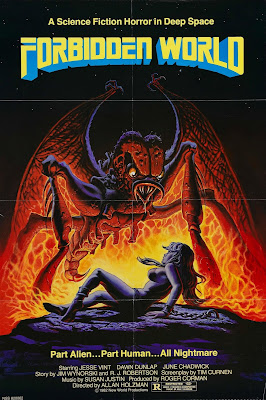 More Roger Corman fun! This one is a repeat from an October Horror Movie Marathon from 2018.
More Roger Corman fun! This one is a repeat from an October Horror Movie Marathon from 2018.


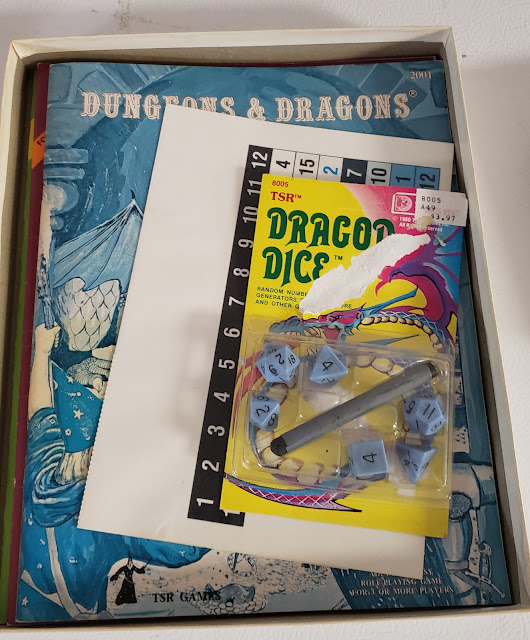
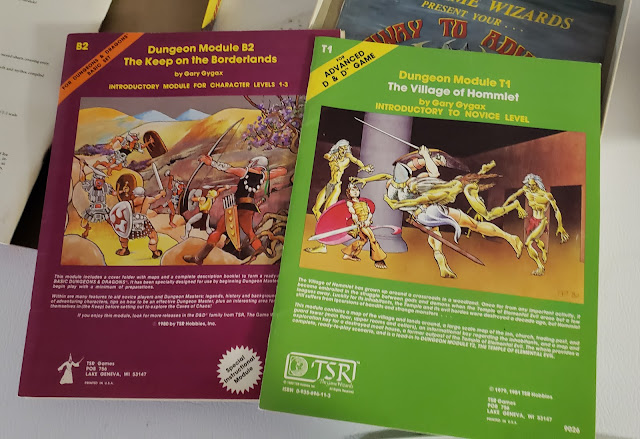
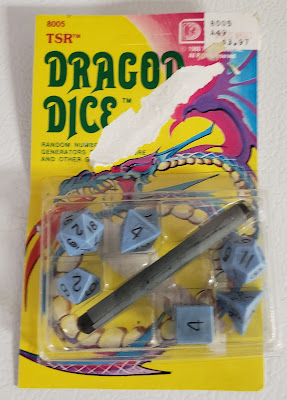

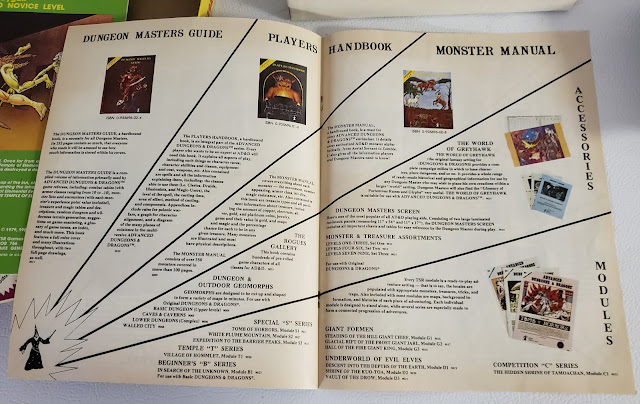



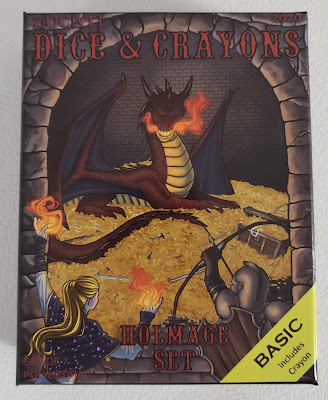

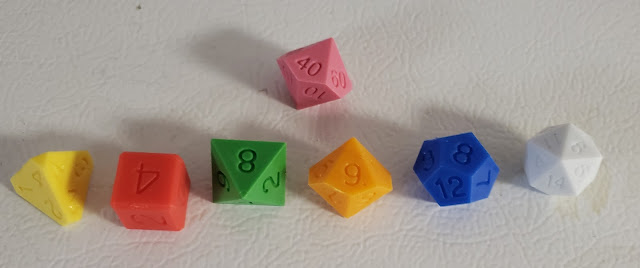


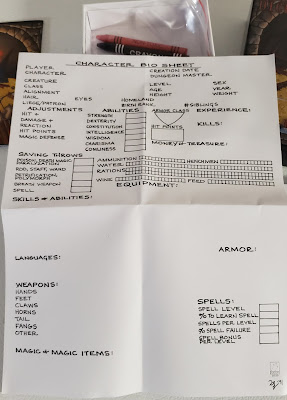
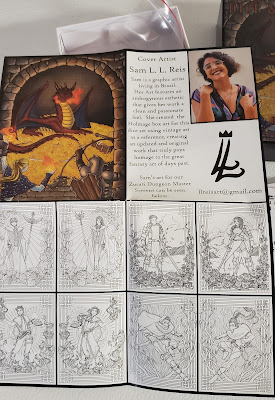
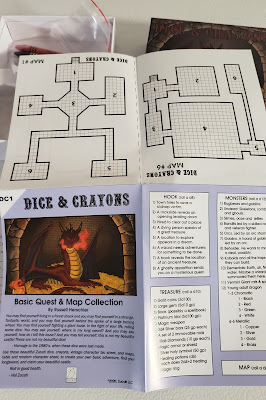

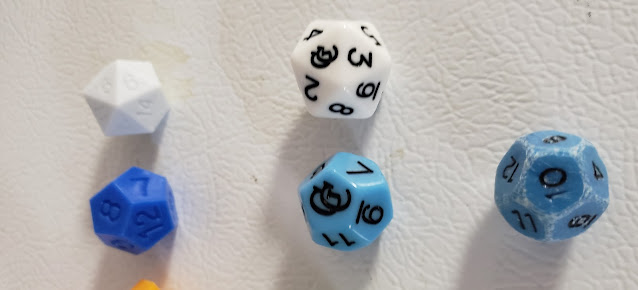
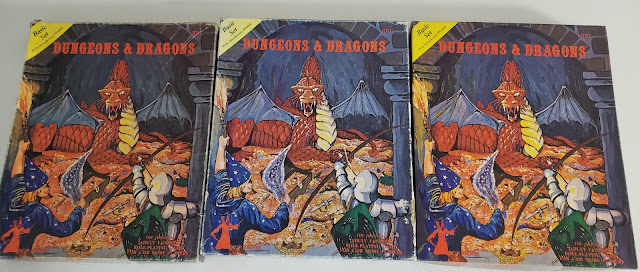
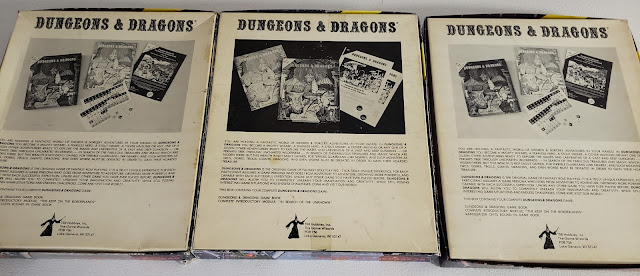

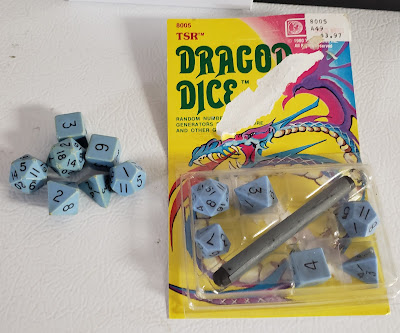
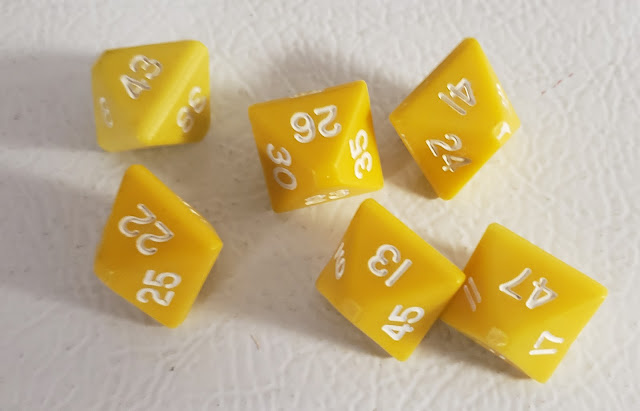



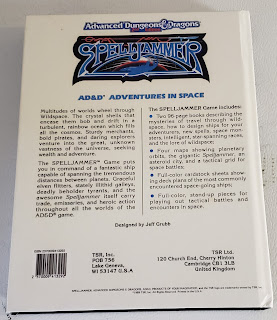



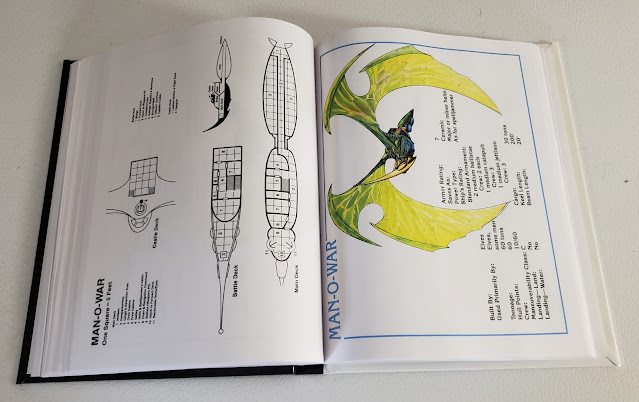
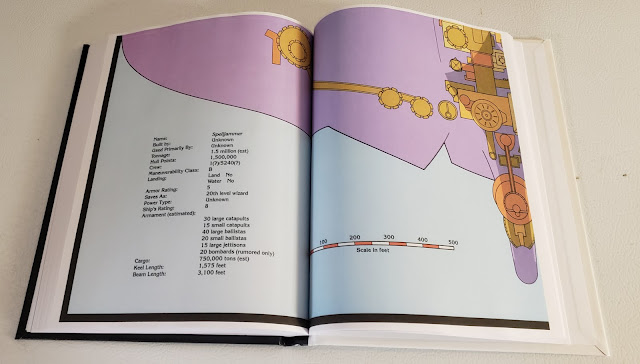
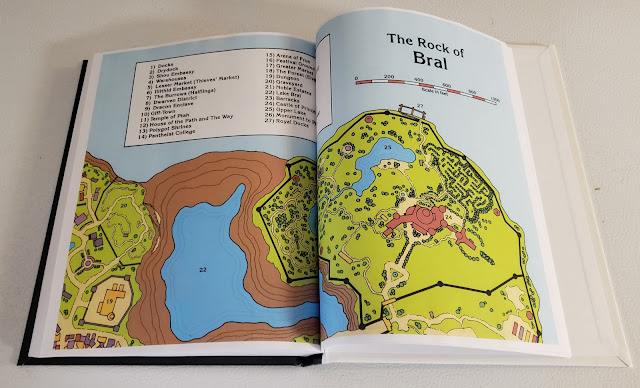


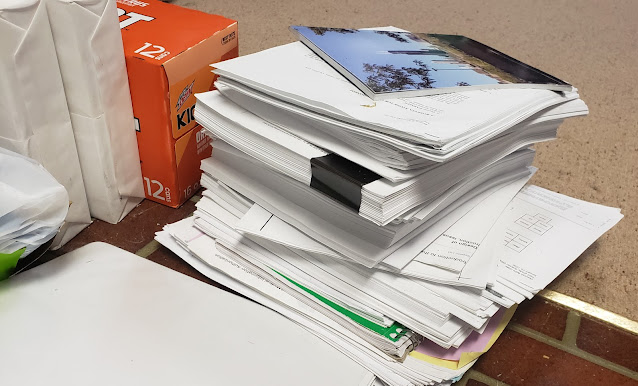
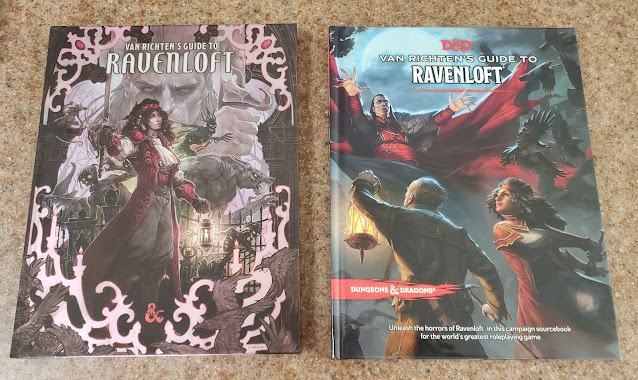

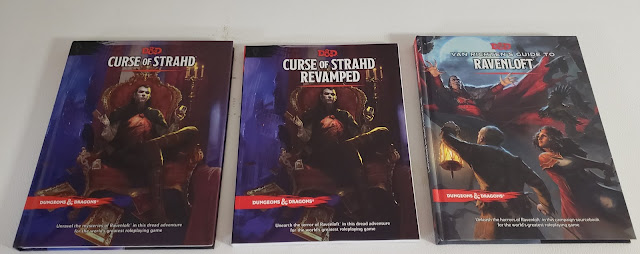









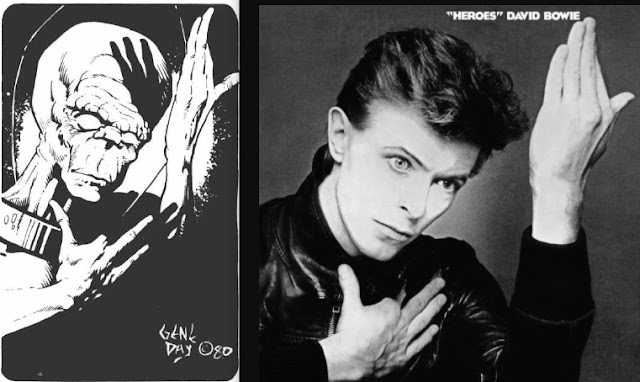


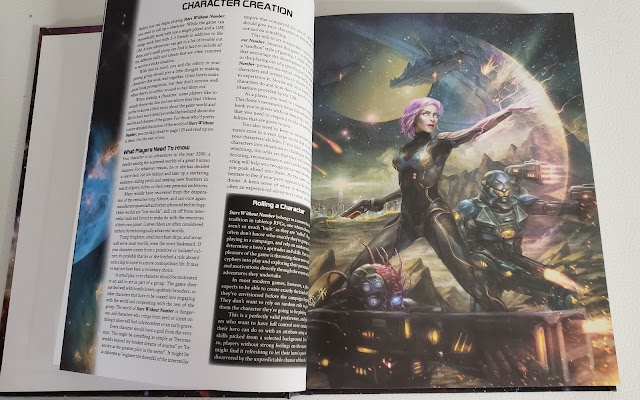



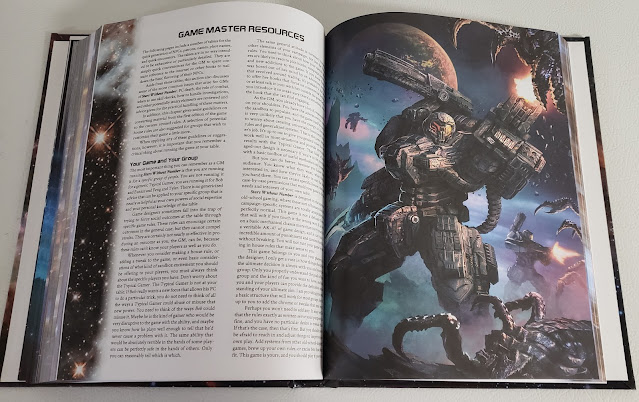

 US D&D Basic Set
US D&D Basic Set
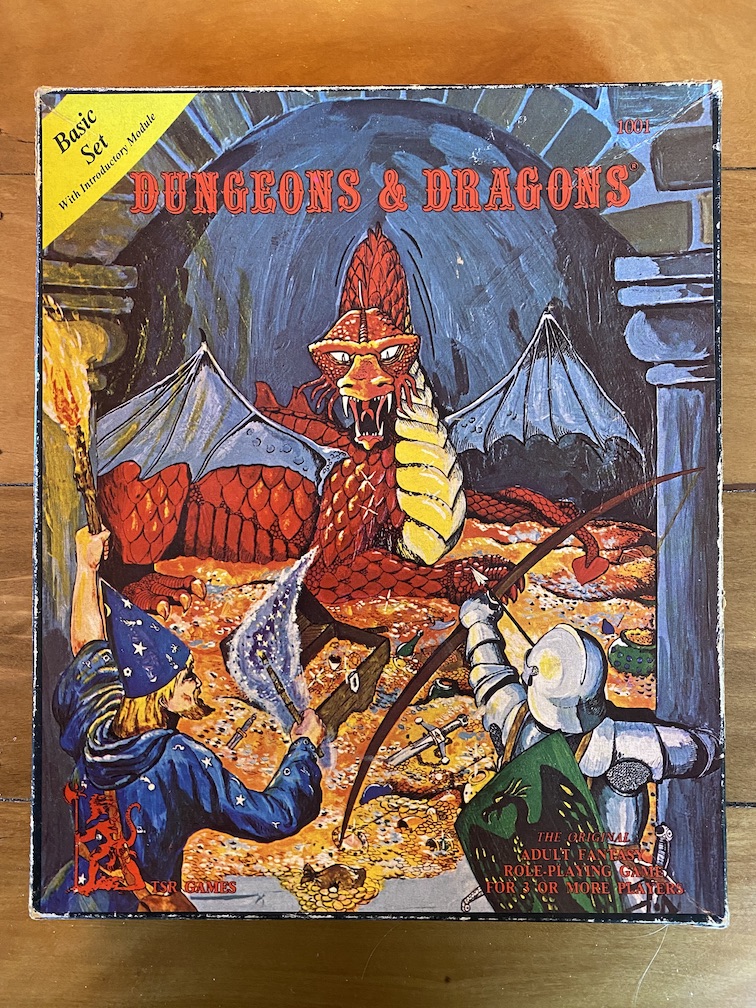 UK D&D Basic Set
UK D&D Basic Set
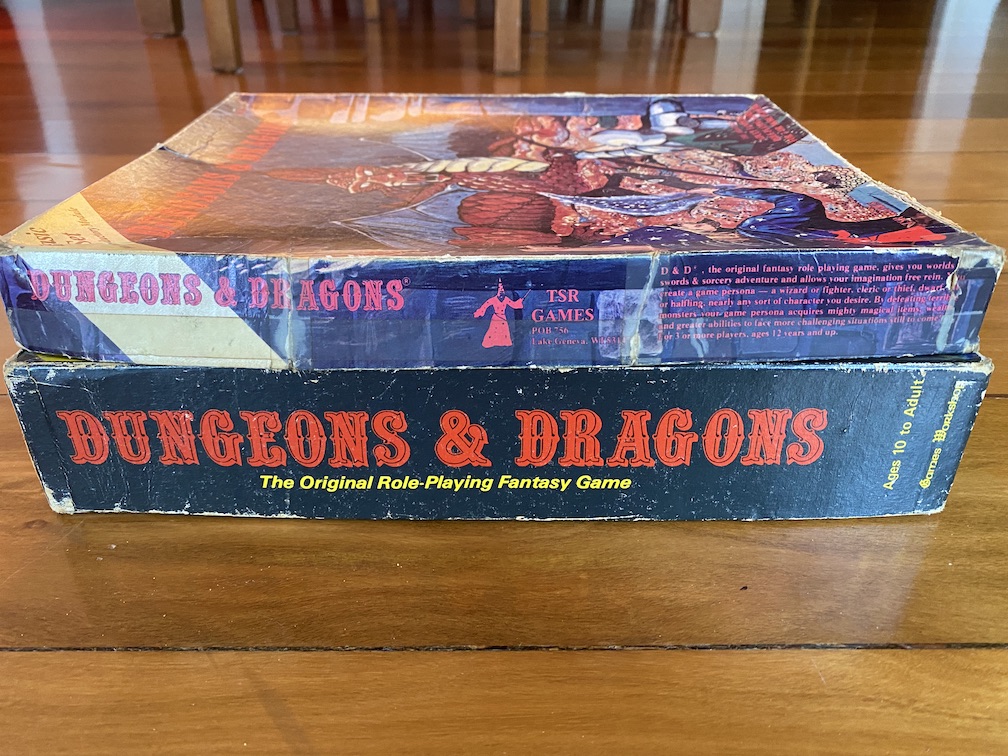 US on top, UK on bottom
US on top, UK on bottom
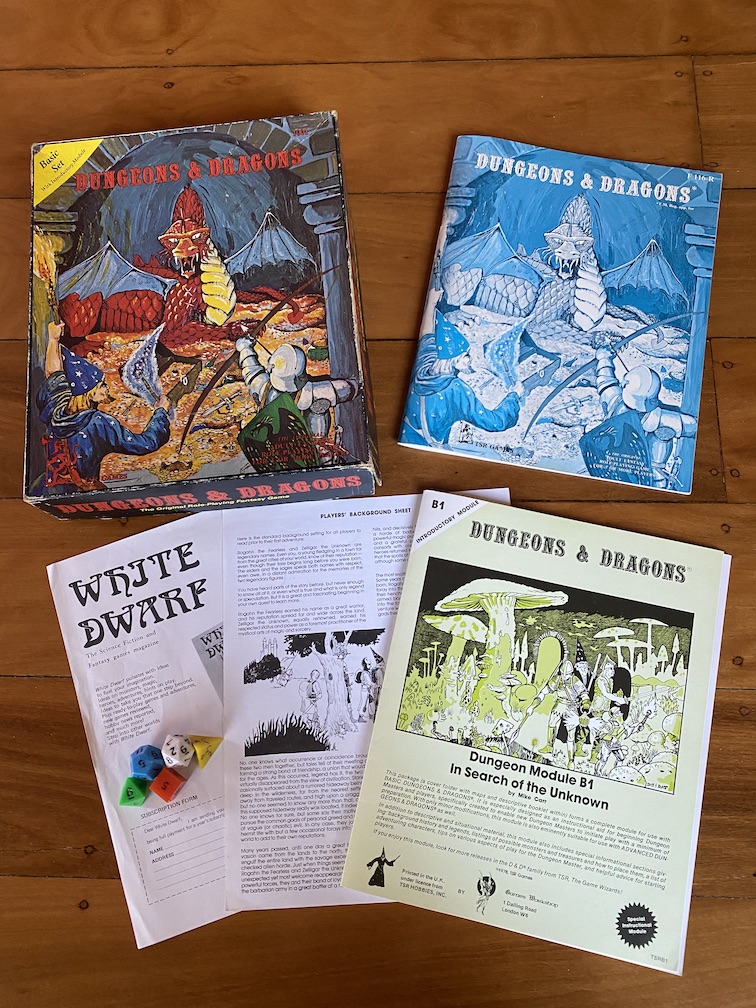 UK Basic Set contents
UK Basic Set contents
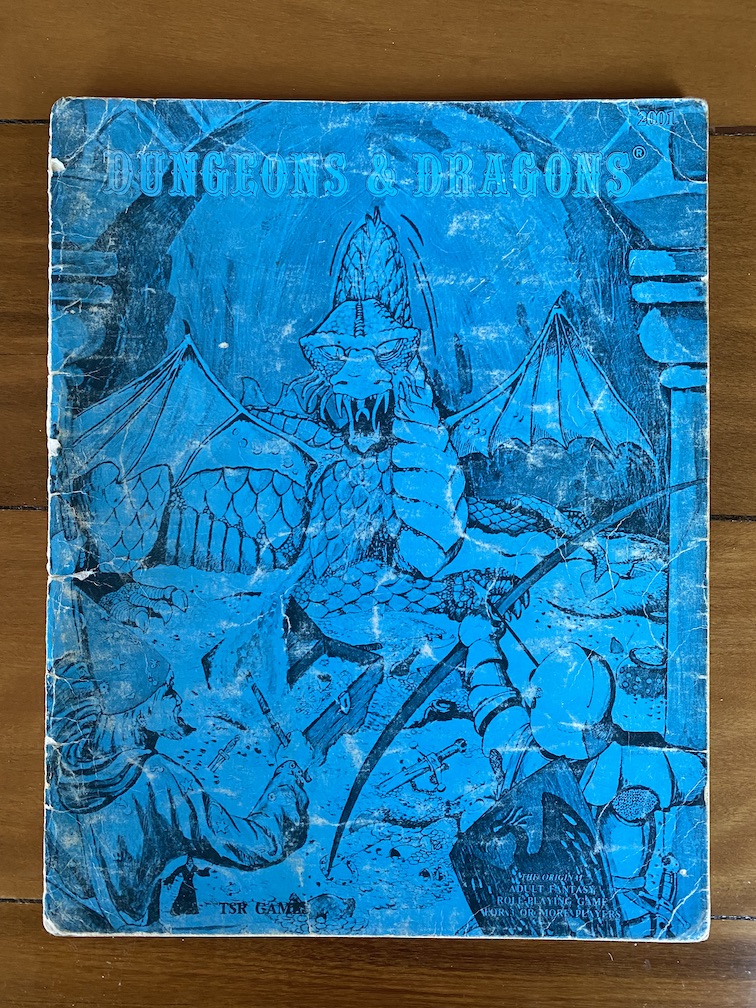 Australian Basic Rulebook – no white
Australian Basic Rulebook – no white


